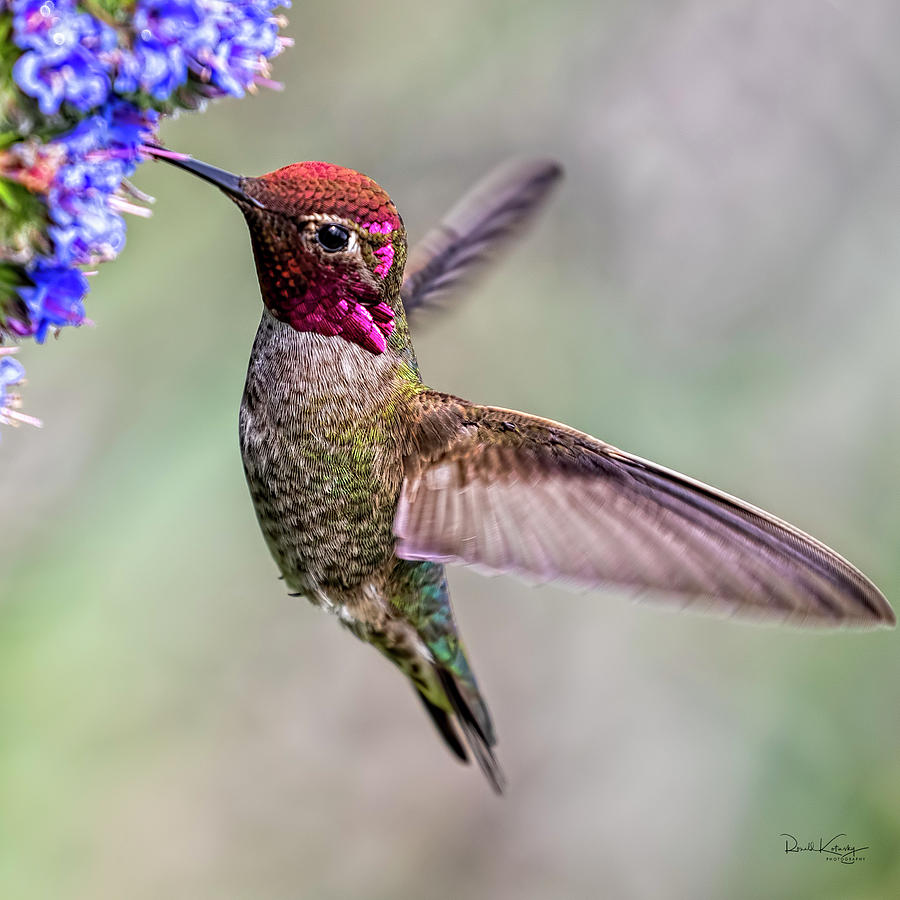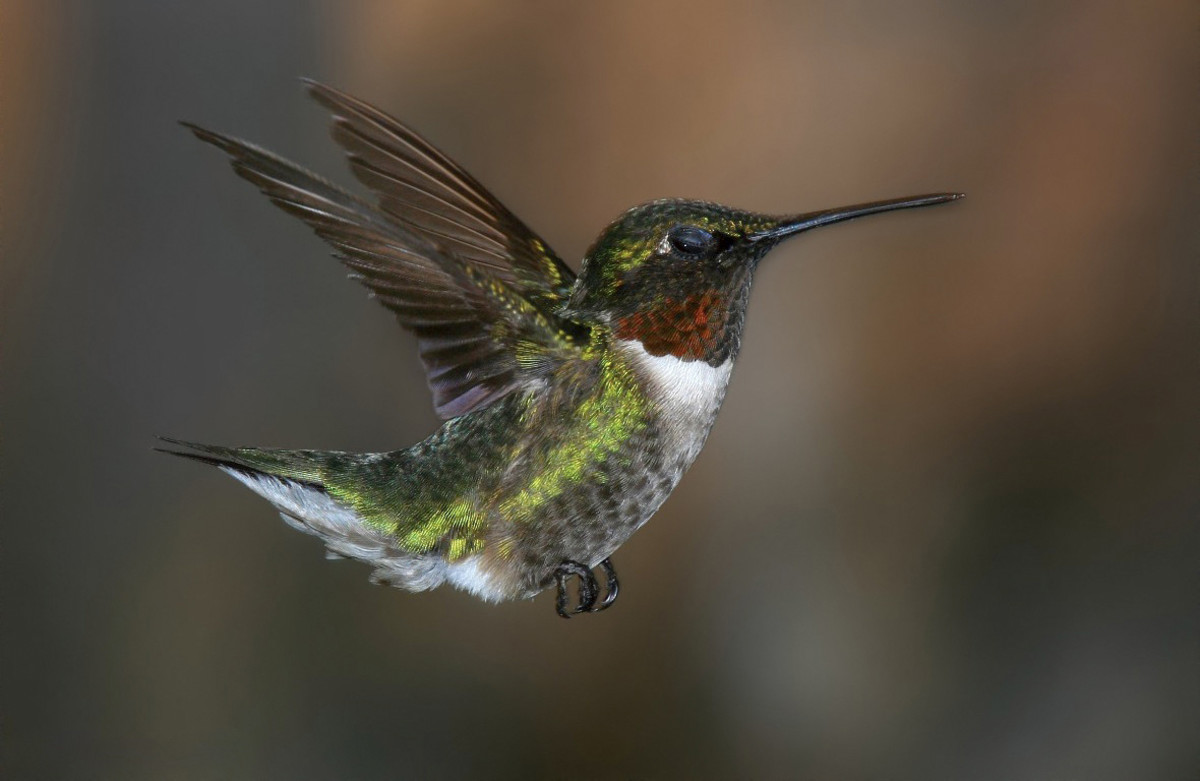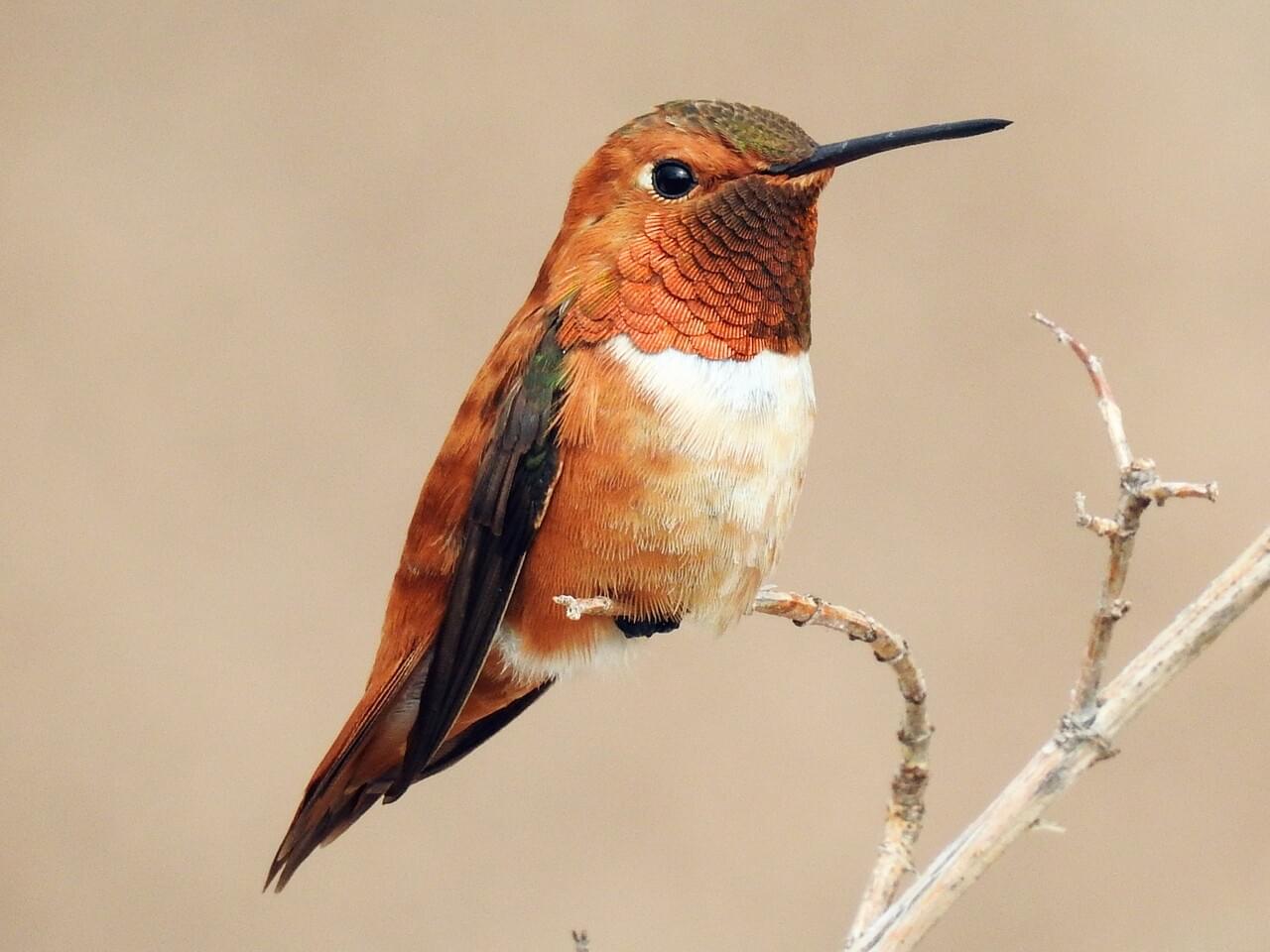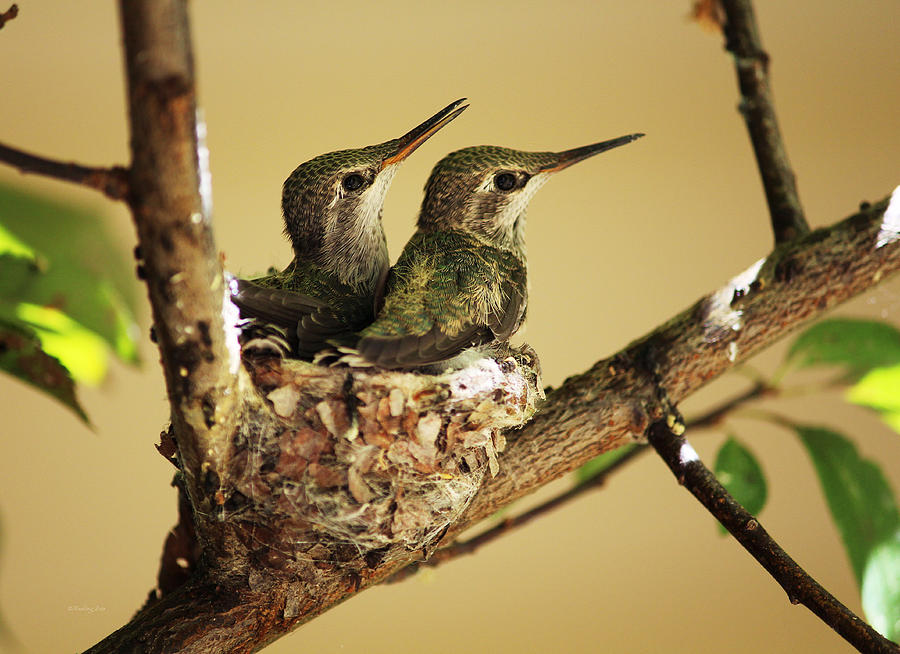Fascinating Hummingbird Facts
"...WHAT IS A HUMMINGBIRD’S SIZE?
These diminutive birds weigh only about 4 g.—or .141 oz... The egg of a hummingbird weighs just 0.4g to 2.4 g. A newly hatched bird is just 0.62 g. However, when it’s time to migrate, hummers pack on the grams for the long trip—sometimes doubling their weight.
They are among the smallest birds, too, with most species measuring 3 to 5 inches long. The smallest bird, the bee hummingbird, is only 2 inches long—& weighs less than 2 g.
HOW FAST DO HUMMINGBIRDS BEAT THEIR WINGS?
Hummingbirds, with their iridescent colors & fairly short wings, beat their wings as fast as 80 times per second! They do NOT flap their wings—they rotate them in a figure 8, which makes it even more remarkable! In fact, their name comes from the fact that they move their wings so fast that they make a humming noise. Hummingbirds can hover, stop instantly, & fly in different directions (even upside down) with exquisite control.
WHERE DO HUMMINGBIRDS LIVE?
Hummingbirds evolved in the equatorial tropics. In the spring, 21 species fly thousands of miles northward from Mexico, Costa Rica, & other southern places to visit the United States & Canada. In the fall, they return to their southern homes.
In North America, the greatest number & variety of hummingbirds can be found in western areas of the United States & as far north as Alaska. Only the Ruby-throated Hummingbird is found east of the Mississippi. The birds also visit southern Canada, especially British Columbia, Alberta, & Nova Scotia.
HOW FAR DO HUMMINGBIRDS MIGRATE?
Many of these birds make round-trip migration flights of more than 1,600 km (995 miles)! Although hummingbirds usually weigh less than an ounce, these tiny birds have a lot of energy. When the wind blows in the direction in which they are flying, they can travel up to 50 mph.
Some fly nonstop across the Gulf of Mexico in spring & autumn. Cornell University scientists report that in preparation for such flights, they double their body weight with nectar & insects. They burn all additional weight when crossing the Gulf of Mexico. They consume 10 times per gram of muscle tissue than the most elite among human athletes, marathoners, & cross-country skiers.
When hummingbirds are arriving in the north, they are sometimes confronted with unusually cold weather & will enter into a hypothermic torpor to survive.
HOW FAST IS A HUMMINGBIRD’S HEART RATE?
Hummingbirds have a very high metabolic rate, with heart rate of 1,260 beats per minute & breaths of 250 times per minute.
The long flights & wing-beating can make a hummingbird weary. As often as every 15 minutes, they look for a place to rest on trees & shrubs with small leaves. Particular plants include birch trees, butterfly bushes, & honey locusts. Don’t worry if you do not have these plants in your yard—your hummingbird might also rest on your feeder’s hanger.
COMMON HUMMINGBIRDS TYPES
Among the most common hummingbirds are the Ruby-throated, Rufous, & Anna’s Hummingbirds.
Ruby-throated Hummingbird
Only the Ruby-throated Hummingbird usually visits areas east of the Mississippi. The males have a distinctive ruby-red throat. Females are greenish, with a white throat & a notched tail.
The Ruby-throated Hummingbird has a range which closely follows deciduous forests east of the 100th Meridian... While most Ruby-throated Hummingbirds cross the Gulf of Mexico, some take a more leisurely route along the coast during spring migration to Mexico & Central America & back in the fall. Males arrive about a week before females during both migrations.
Rufous Hummingbird
A popular hummingbird in the western United States, it makes the longest migration—to northern Alaska—for a bird so small. They have been extensively studied for foraging behavior & pollen transfer. An orange gorget & rufous flanks identify this species. Researchers believe that Rufous Hummingbirds had a major influence on the speciation of flowers in California.
A resident of the Pacific & Southwest states, the male is identified by it’s red throat & crown. The female has a small red patch on its throat.
DO HUMMINGBIRDS SEE RED?
...It turns out that hummingbirds have a dense concentration of cones in their retinas. These cones contain pigments & oil droplets in shades of yellow to red, which seem to act like filters. The filters appear to heighten color sensitivity to red & also yellow, while muting colors such as blue.
WHAT DO HUMMINGBIRDS EAT?
Hummingbirds live on flower nectar & insects, supplemented by food from hummingbird feeders...
HUMMINGBIRD FLOWERS
Hummers will zoom towards any nectar-rich flowers. They do have a heightened sensitivity to brightly-hued red & yellow flowers but also they are speedy learners & will find nectar wherever they can.
The hummingbird is a prolific pollinator of flowers. Research shows that Ruby-throated Hummingbirds deposit 10 times as much pollen as bumblebees. So, to attract hummingbirds to your garden, make sure to include lots of plants known to attract hummingbirds.
What is a hummingbird’s favorite flower? Try bee balm & foxglove, just to name 2.
WHEN DO HUMMINGBIRDS MATE?
Hummingbirds generally mate between March & July, with mid-May being the height of the breeding season.
These tiny flyers are especially vocal during the breeding season, when males interact with other males. Sounds vary from chittering to a humming sound caused by wing movement.
The female selects the nest site & builds the nest—the size of a thimble!—within a week. Common materials for nests are moss & lichen, plant down, spider silk, cotton fibers, feathers, & fur or hair rubbed off on leaves.
2 very small eggs hatch in about 14 days, & the young fledge in 3 weeks. Pairs are only together a few days or weeks. After mating, the male is on his own, leaving the female to incubate the eggs & feed the young mostly a diet of insects.
WHAT’S A HUMMINGBIRD’S LIFE SPAN?
The life expectancy of a hummingbird is from 3 to 6 years. The oldest surviving hummingbird was 9 years old. Females outlive males by several years, probably due to the males’ high energy costs of defending territories & the long spring & fall migrations.
HUMMINGBIRD PREDATORS
The main predators of hummingbirds are swift-flying raptors, such as kestrels; other birds, such as blue jays; & some insects, such as the Praying Mantis. Occasionally, one is caught by a large fish as the bird sips nectar from a pond lily."
Tom Warren
August 18/2021
almanac.com




/ruby-throat-59a6d27b03f402001180de53.jpg)













No comments:
Post a Comment